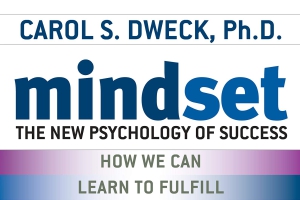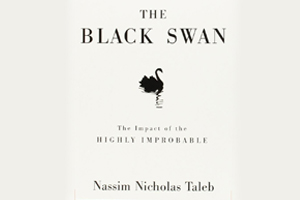Investment involves both failure and success, and nobody knows it better than the biggest investors in the business. The investment guide ‘Big Mistakes: The Best Investors and Their Worst Investments’ by Michael Batnick depicts the ways in which the best investors have failed and also offers readers lessons on creating successful strategies by learning from previous mistakes. This popular book shows readers that even the biggest names in the field of investments can sometimes fail and indicates that the only important thing is to keep learning from prior errors. Including tales from the investment journeys of legends like Jesse Livermore, Warren Buffett, and Paul Tudor Jones, the book imparts important lessons on behavioural finance and astute investments.
Key Takeaways
- Even the smartest people may fall prey to poor investment decisions
- Being smart in one field does not necessarily translate to being a good investor
- It is important to learn from the mistakes of great investors to enhance your portfolio returns
- Be ready to face challenges and obstacles, and arm yourself with an advance plan for unprecedented circumstances
- Focus on taking smart risks and exercise utmost caution when something looks incredible
- Understand that no one can escape from market realities and major crashes like the Great Depression
- Recognize your investing behaviour and understand your mistakes to mitigate losses
The journeys of investing legends can be both – a guiding light and a cautionary tale. Given that the only certainty about the market is the fact that it can change without warning, no investor has ever been able to time the market perfectly. However, as in life, so in investing, it is possible, and advisable, to learn from past mistakes and avoid similar follies in the future. The investment styles and mistakes of the best investors can be surveyed for a keener understanding of how to approach the market and succeed in growing and sustaining wealth for a longer period of time.
Avoid the availability heuristic – Warren Buffett’s mistake
There is no doubt that Warren Buffett is one of the greatest investors to have ever walked this planet. His value investing methods are studied and applied by investors across the world and his investments have created superior returns over the years. However, even Buffett was unable to escape the behavioural folly that affects humankind as a species. As a business magnate, Buffett made several acquisitions over his career, including shoe companies like H.H. Brown in 1991 and Lowell Shoe in 1992. Both the acquisitions were extremely successful and paid off rich dividends. However, the hat-trick in 1993, while acquiring Dexter Shoe, did not pay off as Buffett expected. The lesson here is the play of availability heuristic, a mental shortcut wherein people depend on immediate examples when considering a subject or decision. In Buffett’s case, since his last two shoe company acquisitions were extremely successful, he falsely surmised that the third time would also work like a charm. In accordance with the availability heuristic, he did not focus on the fundamentals of Dexter Shoe and failed to understand that the business would become worthless once low-priced Chinese competitors overtook the market. A mere six years later, the acquisition was written off as worthless, indicating that one must be extremely careful while investing in a company which appears to be similar to a previously lucrative investment.
The Law of Holes – Mark Twain’s mistake
Every intellectual may not be an astute investor, and this can be seen from the example of the famous author Mark Twain. Known for his popular classics revolving around the adventures of Tom Sawyer and Huckleberry Finn, Twain is also an important case study when it comes to failed investments. His investments were as disastrous as his books were successful. One of his earlier investments is the 1880 typesetting machine created by James Paige. The machine was aimed at replacing human-operated typesetting machines but the company did not do well and lost value in a very short span of time. Twain, however, continued putting money into the business, hoping for a turnaround which never materialized. His mistake was holding onto a failing proposition and not accepting defeat even when the law of holes prompted him to let go and save what he could. The law of holes indicates that if one finds themselves in a hole, they must stop digging further in the hope of redemption. Admitting defeat before it’s too late is of prime importance when investing in the market. Know when it is time to get out and let go graciously.
The Folly of Ego – Bill Ackman’s mistake
Activist investors are known for acquiring a stake in a company and putting pressure on the management to take the company in a certain direction. Bill Ackman is one of the biggest and most successful names in this sphere and in 2012, he began to publicly call out a pyramid scheme-based company named Herbalife. His hedge fund, Pershing Square Capital Management, shorted the company believing that its stock would soon crash. Extremely convinced of his belief, Ackman even went on television to state that his short position on Herbalife amounted to about 500 million dollars. Unfortunately, his forecast was incorrect. Eventually, in 2018, Ackman exited this trade at an undisclosed loss. Ackman’s biggest mistake here was his ego – he had gone public to criticize the company and could not exit his position till the losses were too huge to bear. The lesson to be learned is that one should always look at investing as a means to make money and not a place to be proved right. The stock market is an animal which cannot be tamed and believing otherwise will only lead to unmitigated losses. Do not let the ego get in the way of sound investment decisions.
Avoid venturing too far away from the norm – Stanley Druckenmiller’s mistake
There are several investment strategies out there and some of them suggest that investors should venture into the unknown for splendid returns. However, it is equally important to stick with what is known and trusted, as seen from the folly of Stanley Druckenmiller, one of the most prolific and successful macroeconomic investors ever. His investing track record of 30% annual returns is rarely matched by other investors. But, even Druckenmiller was not one without any shortcomings. While he is known for his legendary stock market exploits, Druckenmiller made a grave mistake during the dotcom bubble. Leaving the path he best knew, and buoyed by the enthusiasm regarding technology stocks, Druckenmiller invested six billion dollars in tech stocks, in just one week. Within just six weeks of this unparalleled investment, he lost three billion dollars, cutting his investment in half. The biggest lesson here is that investors should, in most situations, stick to what they know best. If one must venture into the unknown, start small and test your steps before venturing too far out. Staying inside your circle of competence and sticking to an investment style that fits your profile is the best way to make and sustain your wealth. There may be profitable ventures out there but do not bet big unless you are sure of your decisions. And, do not get swayed by the prospect of superb returns or you may end up losing even what you have.
The importance of diversification and leverage – Benjamin Graham’s mistake
Every investment philosophy tells people to diversify their portfolios and have enough leverage to ride the market ups while also safeguarding from market lows. However, this basic tenet may be forgotten when investment opportunities promise unbelievable returns. Benjamin Graham is known as the father of value investing but even he made this basic mistake at one time. Graham has imparted major lessons on the market through his book ‘The Intelligent Investor’ but there is one mistake that everyone needs to learn from. Right before the Great Depression struck and wiped out a majority of people’s earnings, Graham made a decision that failed horribly. He decided to invest all his money in the market and, in 1929, the Dow Jones crashed, taking Graham’s wealth down with it. However, Graham did not learn his lesson here. He surmised that since the market fell so astronomically, there was no way that it would stay down. It had to rise back up. Thinking so, Graham invested even more in the then cheaper stocks by leveraging his portfolio. As a result of leverage, he could end up losing a lot more money. Unfortunately, his calculations backfired and, in the next three years, Graham’s investment account was down 70%. While he learned his lesson and went on to be one of the major proponents of value investing, Graham’s mistake indicates that no investment strategy or method is immune to short-term market volatility. Therefore, it is foolish to invest all your money, and then some, in the same market. It is best to create a portfolio that adequately leverages different asset classes to safeguard your wealth in the event of an unexpected market crash or correction.
Investment is something which is akin to trial and error, one can never know for certain what will work and what will backfire. However, while we cannot gauge how the market will react tomorrow, we can surely take our lessons from the best investors and the worst mistakes that they made during their legendary investment journeys. Remember, it is better to be safe than sorry, and there is nothing safer than applying investment lessons from the greats in your own lives and investments. Many of these mistakes might sound familiar as they primarily stem from behavioural biases and human emotions that can be difficult to control. This is especially true when markets are either witnessing a strong rally or a steep downturn. In such extreme market conditions, you often end up making incorrect investment decisions due to greed or fear. A great way to overcome these biases and mistakes is to invest in Balanced Advantage mutual funds. First up, let us understand how mutual funds can add value to your investment journey. These are investment vehicles that pool investor money and invest it across multiple asset classes such as equity, debt, gold, etc. They are managed by expert fund managers who invest as per a pre-determined investment strategy. This way, they are able to reduce human biases in the investment decision making process. Within mutual funds, there are several categories, and one of them is hybrid mutual funds. Balanced Advantage funds are a type of hybrid mutual fund which invests in a mix of equity, debt, and derivatives instruments and automatically moves from one investment type to another based on the investment environment. So, in upward moving markets they will increase their exposure to equities and in falling markets, they will gradually decrease their equity investments and increase exposure to debt investments. By investing in a Balanced Advantage fund, you can potentially avoid many of the mistakes that have been highlighted in this book. You don’t need to time the market and can invest in a disciplined manner, thereby overcoming emotional biases in uncertain market conditions. Further, you can choose to invest lumpsum money in a Balanced Advantage fund or invest via the Systematic Investment Plan (SIP) route. If you choose the SIP route, then you can invest a fixed amount of money in the fund at time intervals that suit you best. So, you can choose to start an SIP in a Balanced Advantage fund fortnightly, monthly or even quarterly. The best thing is that you can start an SIP with as low as Rs. 500. So, you no longer need to wait to start your investment journey. All you need to do is start an SIP in a Balanced Advantage fund of your choice.
An investor education initiative by Edelweiss Mutual Fund
All Mutual Fund Investors have to go through a onetime KYC process. Investor should deal only with Registered Mutual Fund (RMF). For more info on KYC, RMF and procedure to lodge/redress any complaints, visit -https://www.edelweissmf.com/kyc-norms
MUTUAL FUND INVESTMENTS ARE SUBJECT TO MARKET RISKS, READ ALL SCHEME RELATED DOCUMENTS CAREFULLY.
Trending Books
MUTUAL FUND INVESTMENTS ARE SUBJECT TO MARKET RISKS, READ ALL SCHEME RELATED DOCUMENTS CAREFULLY.

















